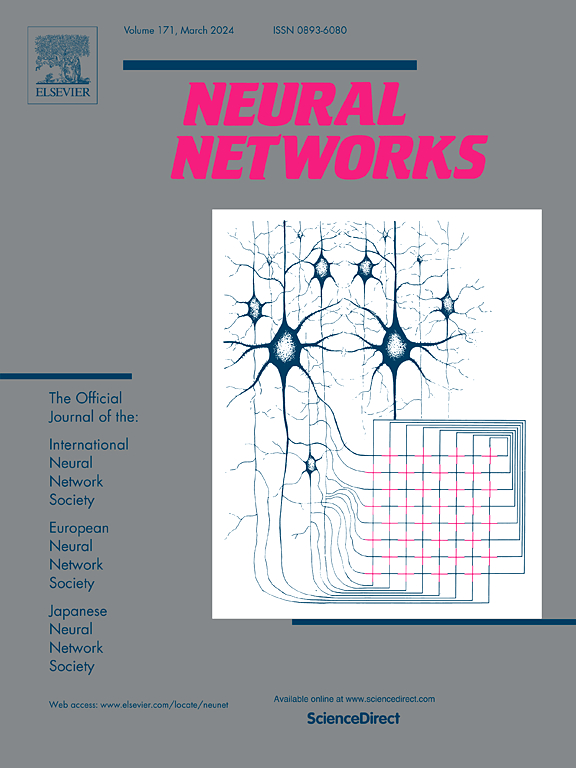Estimating uncertainty from feed-forward network based sensing using quasi-linear approximation
IF 6
1区 计算机科学
Q1 COMPUTER SCIENCE, ARTIFICIAL INTELLIGENCE
引用次数: 0
Abstract
A fundamental problem in neural network theory is the quantification of uncertainty as it propagates through these constructs. Such quantification is crucial as neural networks become integrated into broader engineered systems that render decisions based on their outputs. In this paper, we engage the problem of estimating uncertainty in feedforward neural network constructs. Mathematically, the problem, in essence, amounts to understanding how the moments of an input distribution become modifies as they move through network layers. Despite its straightforward formulation, the nonlinear nature of modern feedforward architectures makes this is a mathematically challenging problem. Most contemporary approaches rely on some form of Monte Carlo sampling to construct inter-laminar distributions. Here, we borrow an approach from the control systems community known as quasilinear approximation, to enable a more analytical approach to the uncertainty quantification problem in this setting. Specifically, by using quasilinear approximation, nonlinearities are linearized in terms of the expectation of their gain in an input–output sense. We derive these expectations for several commonly used nonlinearities, under the assumption of Gaussian inputs. We then establish that the ensuing approximation is accurate relative to traditional linearization. Furthermore, we provide a rigorous example how this method can enable formal estimation of uncertainty in latent variables upstream of the network, within a target-tracking case study.
基于准线性逼近的前馈网络传感不确定性估计
神经网络理论的一个基本问题是不确定性的量化,因为它通过这些结构传播。随着神经网络被整合到更广泛的工程系统中,根据它们的输出做出决策,这种量化至关重要。本文研究了前馈神经网络结构中的不确定性估计问题。从数学上讲,这个问题本质上相当于理解输入分布的矩在网络层中移动时是如何变化的。尽管它的公式很简单,但现代前馈体系结构的非线性特性使其成为一个具有数学挑战性的问题。大多数现代方法依赖于某种形式的蒙特卡罗采样来构造层流间分布。在这里,我们从控制系统界借用了一种称为拟线性逼近的方法,以便在这种情况下对不确定性量化问题采用更具分析性的方法。具体地说,通过使用拟线性近似,非线性根据其输入输出意义上的增益期望进行线性化。在高斯输入的假设下,我们推导了几种常用非线性的期望。然后我们确定,相对于传统的线性化,随之而来的近似是准确的。此外,我们提供了一个严格的例子,该方法如何能够在目标跟踪案例研究中对网络上游潜在变量的不确定性进行正式估计。
本文章由计算机程序翻译,如有差异,请以英文原文为准。
求助全文
约1分钟内获得全文
求助全文
来源期刊

Neural Networks
工程技术-计算机:人工智能
CiteScore
13.90
自引率
7.70%
发文量
425
审稿时长
67 days
期刊介绍:
Neural Networks is a platform that aims to foster an international community of scholars and practitioners interested in neural networks, deep learning, and other approaches to artificial intelligence and machine learning. Our journal invites submissions covering various aspects of neural networks research, from computational neuroscience and cognitive modeling to mathematical analyses and engineering applications. By providing a forum for interdisciplinary discussions between biology and technology, we aim to encourage the development of biologically-inspired artificial intelligence.
 求助内容:
求助内容: 应助结果提醒方式:
应助结果提醒方式:


